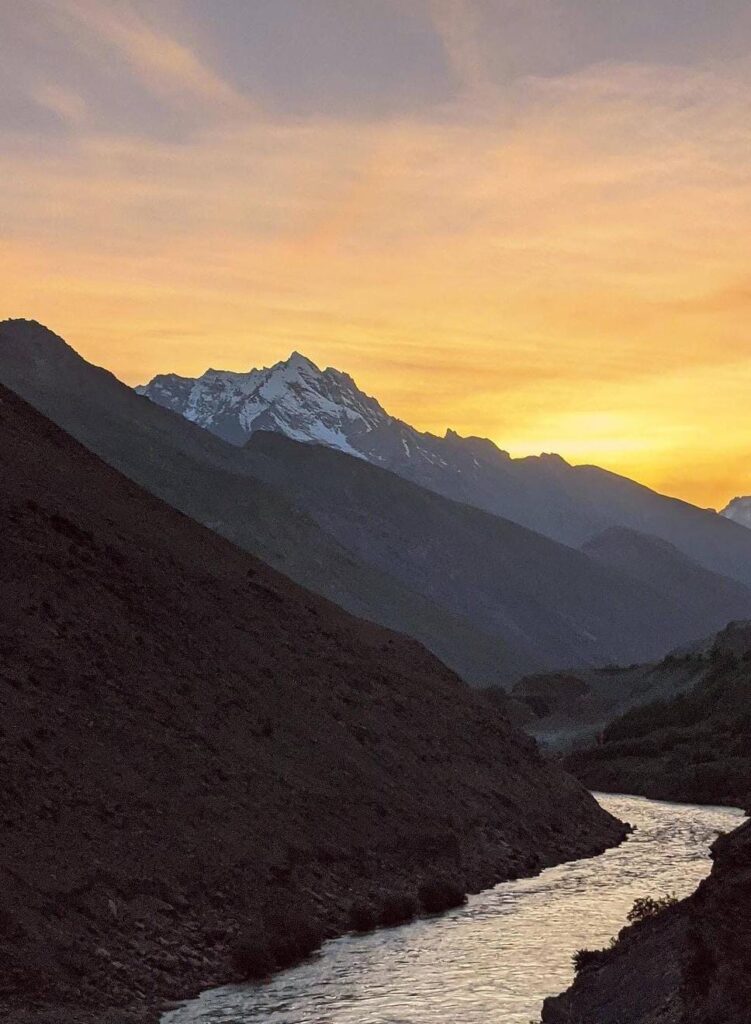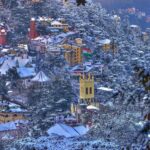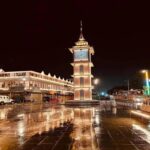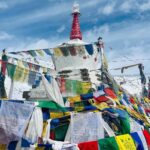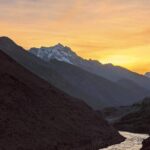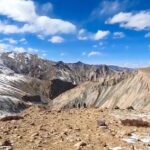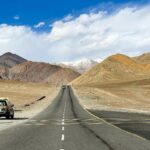zanskar valley
Zanskar valley is a remote and beautiful high altitude desert valley in the Kargil district of the Indian union territory of Ladakh. It is located between the Zanskar Range and the Great Himalayas, at an average elevation of 3,500 meters (11,500 feet). The valley is accessible by road for only a few months each year.
Zanskar is known for its stunning scenery, including snow-capped mountains, turquoise lakes, and barren landscapes. It is also home to a number of ancient Buddhist monasteries, making it a popular destination for both spiritual and adventure seekers.
For centuries, Zanskar remained isolated from the rest of the world due to its rugged terrain and harsh winters. But in recent years, it has started to gain recognition as a paradise for nature lovers and adventure seekers. In this blog, we will take you on a virtual tour of Zanskar Valley, uncovering its natural wonders and the thrilling experiences it offers. So, get ready to embark on a captivating journey through this remote Himalayan treasure.
Geography of Zanskar Valley
Zanskar Valley is a high altitude desolate tract valley positioned in the Kargil district. It is located among the Zanskar Range and the Great Himalayas, at a median elevation of 3,500 meters (11,500 toes). The valley is surrounded with the aid of snow capped mountains, together with the Nunkun height (7,013 meters/22,992 feet), the highest height in the Zanskar Range.
The Zanskar River flows through the valley, dividing it into parts: the Doda River valley to the west and the Stod River valley to the east. The river is a first-rate source of water for irrigation and drinking water within the valley.
Zanskar is a chilly wilderness area, with temperatures ranging from -20°C (-4°F) inside the iciness to 25°C (77°F) inside the summer season. The valley gets very little rainfall, and the landscape is frequently barren. However, there are some of alpine meadows and excessive altitude lakes within the valley, which assist loads of vegetation and fauna.
Location of Zanskar Valley
Zanskar Valley is positioned approximately 250 kilometers (a hundred and fifty five miles) south of Kargil city on NH301. It is available with the aid of street for only a few months each 12 months. It’s mainly in the area of Jammu and Kashmir. Zanskar Valley is surrounded by means of the Zanskar Range to the north and the Great Himalayan Range to the south.
The nearest predominant town and gateway to Zanskar Valley is Leh, which is the capital of Ladakh. Travelers generally get admission to Zanskar Valley from Leh, both through avenue or with the aid of air. The valley itself is a far off and pristine vicinity acknowledged for its beautiful natural beauty and specific cultural historical past.
How to reach Zanskar Valley
Getting to Zanskar Valley normally includes a journey to Leh, which serves as the gateway to the vicinity. Here are the principle approaches to attain Zanskar Valley:
By Air:
- The fastest way to reach Leh, the entry point to Zanskar, is via air. Leh has an airport, Kushok Bakula Rimpochee Airport, which is well-connected to numerous main Indian cities, together with Delhi and Srinagar.
- Once you arrive in Leh, you may hold your adventure to Zanskar Valley by way of road.
By Road (From Leh):
- If you choose a scenic avenue experience, you could tour from Leh to Zanskar Valley through road. The distance is approximately 240 kilometers (149 miles), but the adventure can take round 8-10 hours because of the mountainous terrain and regularly challenging street situations.
- The number one path from Leh to Zanskar Valley is thru the Leh-Kargil Highway (NH1D). It takes you via breathtaking landscapes, consisting of the picturesque Suru Valley.
- It’s essential to be aware that the road is normally open only from June to September due to heavy blizzard at some stage in the wintry weather months. Check street situations and travel advisories earlier than your journey.
By Public Transport:
- Local buses and shared taxis perform among Leh and Padum, that is the main metropolis in Zanskar Valley.
- The bus journey can be greater budget friendly but can be much less comfortable and slower. Shared taxis offer a extra bendy and faster alternative for travel among Leh and Zanskar.
Careful planning and preparation is required before going to Zanskar Valley. Make sure the necessary let’s in, especially if you are planning to move a few territories. In addition, check trail conditions, weather forecasts, and resort amenities. A trip to Zanskar is an adventure in itself, and proper planning will help make your trip memorable and safe.
Natural Beauty of Zanskar Valley
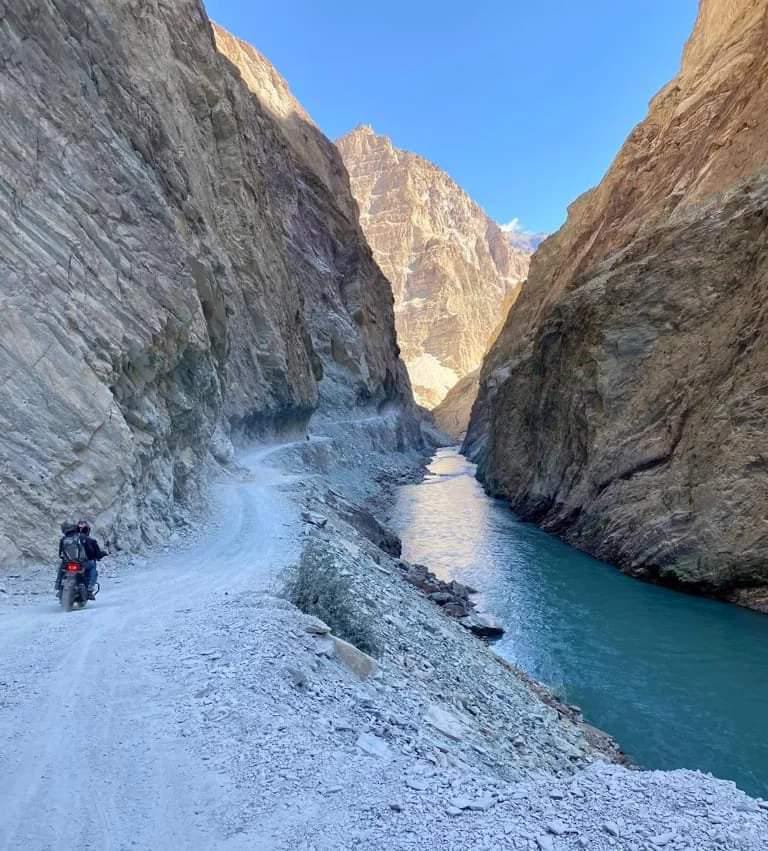
Zanskar Valley is renowned for its breathtaking natural beauty, and its landscapes are nothing short of awe-inspiring. Here are some key aspects of the valley’s natural beauty:
1. Snow Capped Peaks:The valley is surrounded by towering, snow capped peaks of the Zanskar Range and the Great Himalayan Range. The pristine white of these mountains contrasts beautifully with the clear blue skies.
2. The Zanskar River: The Zanskar River, originating from glaciers high in the Himalayas, flows through the valley, carving deep gorges and canyons. The river’s turquoise waters stand out against the rugged terrain.
3. Deep Valleys: Zanskar Valley is a land of deep valleys and high cliffs. The deep ravines and canyons provide dramatic backdrops and offer some of the most breathtaking views in the Himalayas.
4. Lush Green Valleys: In contrast to the stark, rocky landscape, there are lush green valleys where you’ll find fertile farmlands and meadows, adding vibrant colors to the scenery.
5. Pristine Wilderness: The valley remains relatively untouched and unspoiled by modern development, making it a haven for those seeking a truly wild and remote natural environment.
6. Glaciers: Zanskar Valley is home to numerous glaciers, and during treks, you can witness the immense beauty of these ice formations, such as Drang-Drung Glacier, which is one of the largest in the region.
7. Flora and Fauna: The valley’s diverse ecosystems support a range of plant and animal life. You can spot wildlife like ibex, blue sheep, and snow leopards in the region, making it a hotspot for nature enthusiasts and wildlife photographers.
8. Crystal-Clear Skies: Zanskar Valley offers some of the clearest skies in the world, making it an excellent location for stargazing and astrophotography.
9. Changing Seasons: The valley’s beauty changes with the seasons, from the vibrant colors of spring and summer to the snowy wonderland of winter, creating year-round opportunities for exploration.
10. Unique Geological Formations: The landscape is dotted with unique geological formations, such as natural arches, limestone caves, and rock formations that add to the valley’s charm.
11. Glacial Lakes: The region boasts a number of glacial lakes, including the mesmerizing Phuktal Lake, which is surrounded by rugged mountains and glaciers.
Zanskar Valley’s natural beauty is a source of inspiration for adventurers, nature lovers, and photographers. Its rugged yet pristine environment offers a visual feast that can be both humbling and awe-inspiring. Whether you’re seeking tranquility, adventure, or a deeper connection with nature, the valley provides a truly unique and unforgettable experience.
Best Time to Visit Zanskar Valley
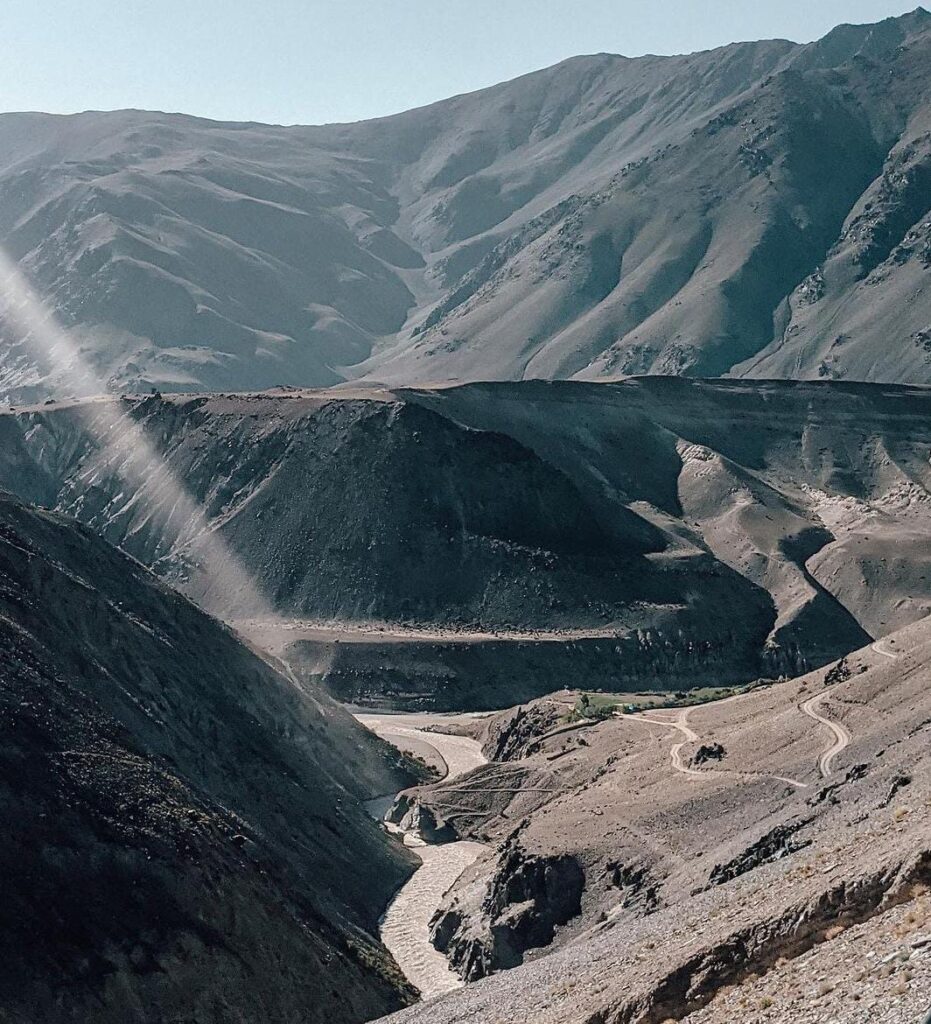
The best time to visit Zanskar Valley largely depends on your preferences and the experiences you’re seeking. Zanskar Valley experiences distinct seasons, each offering its own unique charm and activities. Here’s a breakdown of the best times to visit Zanskar Valley:
Summer (June to September):
- Best for: General tourists, adventure seekers, and trekkers.
- During this period, the weather is relatively mild, and most roads leading to Zanskar Valley are open, making it accessible.
- The summer months are ideal for trekking, river rafting, and exploring the cultural heritage of the region.
- The meadows are in full bloom, creating a picturesque landscape.
Monsoon (July and August):
- Best for: Avoiding crowds and enjoying lush greenery.
- Zanskar Valley receives minimal rainfall compared to other parts of India during the monsoon season. The landscape becomes even more vibrant with lush green valleys.
- However, road conditions can deteriorate due to occasional landslides.
Early Autumn (September to October):
- Best for: Trekkers and photographers.
- This is an excellent time for trekkers as the weather remains pleasant, and the landscape is still vibrant.
- The crowds are thinner compared to the summer months, allowing for a more peaceful experience.
Late Autumn (November):
- Best for: Adventurous travelers and photographers.
- November marks the onset of winter, and the landscape begins to change with the first snowfall.
- While the weather becomes colder, it’s a great time for those seeking unique experiences like the Chadar Trek (walking on the frozen Zanskar River).
Winter (December to February):
- Best for: Extreme adventurers and those seeking a winter wonderland.
- Winter in Zanskar Valley is harsh, with extremely cold temperatures. However, it’s the time to experience the Chadar Trek, a world-famous ice trek on the frozen river.
- The valley becomes a pristine white landscape, offering a surreal and serene experience.
Early Spring (March to May):
- Best for: Adventure enthusiasts and those who want to witness the changing seasons.
- As winter subsides, early spring brings a unique transition, with melting snow creating waterfalls and lush meadows. It’s a good time for trekkers and photographers.
It’s essential to plan your visit according to your interests and the activities you want to engage in. Keep in mind that road access to Zanskar Valley is limited during the winter months, so if you plan to visit during this time, be prepared for challenging conditions. For a more comfortable visit, summer and early autumn are popular choices, while late autumn offers a mix of adventure and changing landscapes.
Attractions of Zanskar Valley
Zanskar Valley is a place of stunning natural beauty, rich cultural heritage, and adventure opportunities. Here are some of the top attractions in Zanskar Valley that visitors should explore:
Padum: The main town in Zanskar Valley, Padum offers a glimpse into the local way of life. You can visit the Karsha Monastery and the nearby Chuchikjal Cave Monastery.
Karsha Monastery: This ancient monastery is the largest in Zanskar and is known for its stunning architecture and vibrant festivals.
Stongdey Monastery: Perched on a hill, this monastery provides breathtaking views of the surrounding valley. It’s known for its collection of thangka paintings and ancient scriptures.
Phugtal Monastery: One of the most remote monasteries in the world, Phugtal is built into the cliffs and is a remarkable site for trekkers and adventurers.
Drang-Drung Glacier: Located on the way to Zanskar Valley, this glacier is a remarkable sight and offers great opportunities for photography.
Zanskar River: The Zanskar River is a key attraction, and you can enjoy river rafting or simply admire the beauty of its deep gorges and pristine waters.
Trekking: Zanskar Valley offers a plethora of trekking routes, including the famous Chadar Trek (walking on the frozen river in winter), the Markha Valley Trek, and the Stok Kangri Trek.
Local Villages: Explore local Zanskari villages to witness the traditional way of life. Villages like Rangdum and Zangla are worth a visit.
Wildlife Spotting: Zanskar Valley is home to a variety of wildlife, including ibex, blue sheep, snow leopards, and numerous bird species. Wildlife enthusiasts can embark on excursions to spot these creatures.
Natural Arch and Limestone Caves: Zanskar Valley is known for its unique geological formations, including natural arches and limestone caves. Explore these natural wonders for an exciting adventure.
Gustor Festival: If your visit aligns with the Gustor Festival at one of the monasteries, don’t miss the opportunity to witness vibrant mask dances and cultural celebrations.
Historical Rock Carvings: The valley features ancient rock carvings and inscriptions that offer insights into the region’s history.
Photographic Opportunities: The entire valley is a photographer’s paradise, with its stunning landscapes, clear skies, and unique cultural elements.
Environmental Conservation Initiatives: Learn about local conservation efforts and interact with organizations working to protect the pristine environment of Zanskar.
Zanskar Valley is a destination that offers something for everyone, whether you’re interested in cultural exploration, outdoor adventure, or simply taking in the breathtaking scenery. It’s a place where natural beauty and cultural heritage blend seamlessly, creating a memorable experience for travelers.
Frequently asked questions about Zanskar Valley
What is Zanskar Valley?
Zanskar Valley is a high-altitude desert valley located in the Kargil district of Ladakh, India. It is known for its stunning scenery, including snow-capped mountains, turquoise lakes, and barren landscapes. Zanskar is also home to a number of ancient Buddhist monasteries, making it a popular destination for both spiritual and adventure seekers.
Where is Zanskar Valley located?
Zanskar Valley is located in the northern part of the Indian union territory of Ladakh, which is situated in the northernmost region of the Indian subcontinent. It is specifically within the region of Jammu and Kashmir.
Zanskar Valley is surrounded by the Zanskar Range to the north and the Great Himalayan Range to the south. The nearest major city and gateway to Zanskar Valley is Leh, which is the capital of Ladakh. Travelers typically access Zanskar Valley from Leh, either by road or by air. The valley itself is a remote and pristine region known for its stunning natural beauty and unique cultural heritage.
What are the things to do in Zanskar Valley?
Zanskar Valley offers a wide range of activities and experiences for travelers seeking adventure, culture, and natural beauty. Here are some of the top things to do in Zanskar Valley:
- Trekking: Zanskar Valley is a trekking paradise, offering numerous trekking routes. The famous Chadar Trek (walking on the frozen Zanskar River) is a must for adventure enthusiasts. Other popular treks include the Markha Valley Trek, Stok Kangri Trek, and the Zanskar to Indus River Trek.
- Rafting: The Zanskar River provides thrilling opportunities for white-water rafting. The Zanskar River Expedition, from Padum to Nimu, is a favorite among rafting enthusiasts.
- Visit Monasteries: Explore the ancient monasteries of Zanskar, including Karsha Monastery, Stongdey Monastery, Phugtal Monastery, and many others. These monasteries offer insights into the region’s spiritual and cultural heritage.
- Attend Festivals: If your visit coincides with local festivals, such as the Gustor Festival, be sure to attend. These festivals feature traditional masked dances, rituals, and celebrations.
- Photography: Zanskar Valley is a photographer’s paradise, with stunning landscapes, unique geological features, and vibrant cultural traditions.
- Wildlife Spotting: The region is home to diverse wildlife, including ibex, blue sheep, snow leopards, and various bird species. You can go on wildlife excursions to spot these creatures.
- Rock Climbing: If you’re an avid climber, there are opportunities for rock climbing in some areas of the valley.
- Explore Natural Wonders: Discover the valley’s unique geological formations, including natural arches and limestone caves.
- Camping: Set up camp in the valley’s beautiful meadows and enjoy a night under the starry sky.
Where to stay in Zanskar Valley?
Zanskar Valley offers a range of accommodation options to suit various budgets and preferences. Here are some places where you can stay in Zanskar Valley:
- Hotels and Guesthouses: In towns like Padum, you’ll find a variety of hotels and guesthouses offering different levels of comfort. These accommodations cater to a wide range of budgets, from basic guesthouses to more comfortable hotels.
- Camping: Camping is a popular option in Zanskar Valley, and you can find campsites in picturesque locations. Some tour operators offer organized camping experiences with tents, meals, and amenities.
- Homestays: Staying with local families in homestays provides an authentic cultural experience. You can find homestay options in several villages, where you’ll get to interact with residents and enjoy traditional Zanskari hospitality.
- Monastery Stays: Some monasteries in Zanskar offer basic lodging facilities for travelers. Staying in a monastery can be a unique and peaceful experience, and it often involves participating in daily monastic life.
- Guesthouses in Remote Villages: While trekking through remote areas, you’ll come across guesthouses in villages where you can rest and have meals. These guesthouses are basic but provide a comfortable place to sleep.
- Campgrounds: If you’re on a trek or a long journey, there are campgrounds and basic accommodations along the way, often run by local communities or trekking companies.
- Luxury Camps: In some areas, you can find luxury tented camps with comfortable amenities, perfect for travelers who want a touch of luxury while still experiencing the wilderness.
When is the best time to visit Zanskar Valley?
The best time to visit Zanskar Valley is during the summer months, from May to September. During this time, the weather is mild and the roads are open. However, Zanskar Valley can also be visited in the winter, when the river freezes over and visitors can walk, bike, or even drive on the ice.
How to get to Zanskar Valley?
The best way to get to Zanskar Valley is by road. There are regular buses from Kargil town to Padum, the administrative headquarters of Zanskar Valley. In the winter, the only way to get to Zanskar Valley is by air from Leh Airport to Padum Airport. However, flights are often cancelled due to bad weather.
Where to stay in Zanskar Valley?
There are a number of hotels and guesthouses in Zanskar Valley, ranging from budget-friendly options to luxury accommodations. Some of the most popular places to stay include:
- Hotel Zanskar: Hotel Zanskar is a luxury hotel located in Padum. It offers stunning views of the Zanskar Range and the Zanskar River.
- Hotel Lungnak: Hotel Lungnak is a mid-range hotel located in the Lungnak Valley. It is a great option for visitors who want to be close to the Phuktal Monastery.
- Guest House Stongde: Guest House Stongde is a budget-friendly guesthouse located in the village of Stongde. It is a great option for visitors who are on a tight budget.
What are the challenges of traveling to Zanskar Valley?
Traveling to Zanskar Valley, while incredibly rewarding, comes with its set of challenges due to its remote and high-altitude location. Here are six challenges travelers may encounter:
- Harsh Terrain and Weather: The journey to Zanskar Valley involves traveling through rugged and mountainous terrain. The region experiences extreme weather conditions, with cold winters and unpredictable road conditions, which can make travel challenging, especially in the winter months.
- High Altitude: Zanskar Valley is at a high altitude, with most areas situated above 10,000 feet (3,000 meters). Travelers may experience altitude sickness, including symptoms like headache, dizziness, and shortness of breath. It’s crucial to acclimatize properly to prevent altitude-related health issues.
- Limited Road Access: The valley’s road access is limited, and the primary route from Leh to Zanskar Valley is open only from June to September due to heavy snowfall during the winter. Road conditions can be challenging, with narrow, winding mountain roads.
- Lack of Infrastructure: Zanskar is a remote region with limited infrastructure. Accommodations, medical facilities, and other services may be basic or unavailable in some areas. Travelers should be prepared for self-sufficiency and carry essential supplies.
- Permit Requirements: Travelers need permits to visit certain areas in Zanskar Valley. Obtaining these permits can be time-consuming, and travelers must adhere to the regulations set by local authorities.
- Language and Communication: English is not widely spoken in Zanskar, and communication may be challenging, especially in remote villages. It’s helpful to have a basic understanding of Ladakhi or Hindi. Additionally, limited internet and mobile network connectivity may restrict communication.
Despite these challenges, Zanskar Valley’s unique beauty, rich culture, and adventure opportunities make it a destination worth exploring. Proper planning, acclimatization, and being prepared for the region’s conditions can help travelers make the most of their Zanskar Valley experience.
Discover the Magic of Kashmir’s Natural Beauty in Our New Blog – An Adventure You Can’t Miss! THIKSEY MONASTERY , LEH ~ LADAKH , SHANTI STUPA , LEH PALACE , Pangong tso , tso moriri , Nubra valley , khardung la , Magnetic hill , Hemis national park
